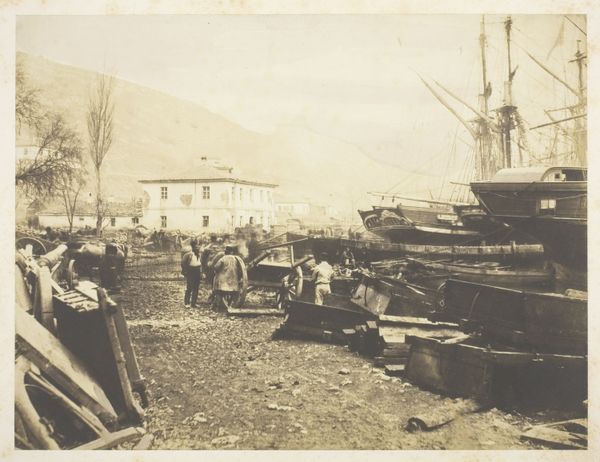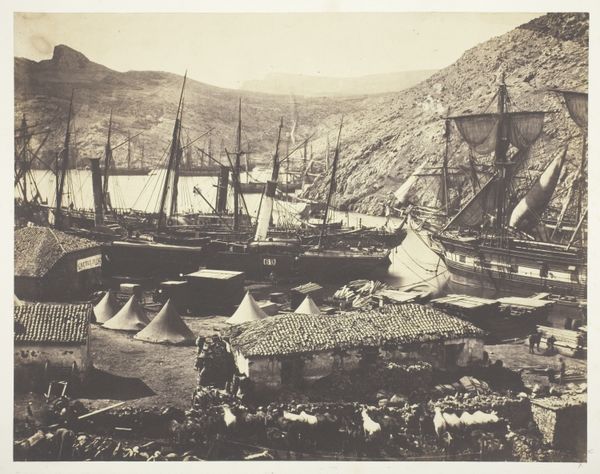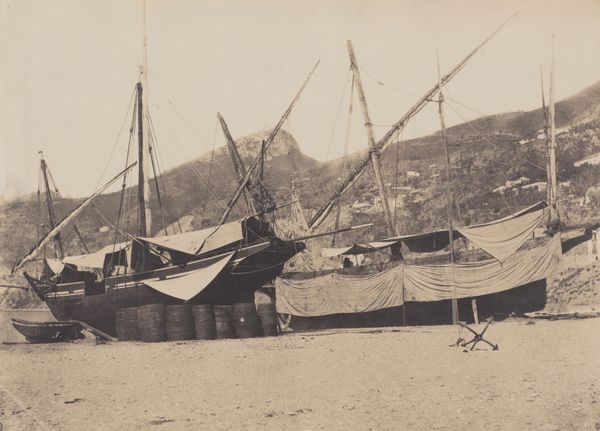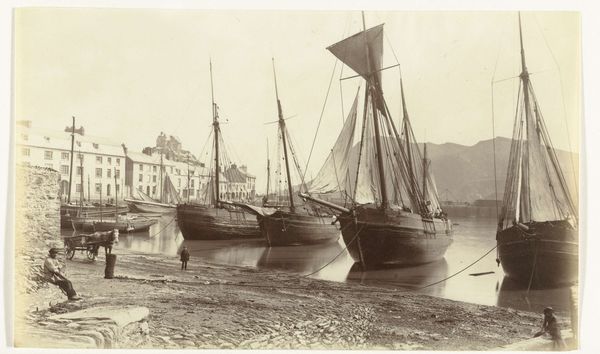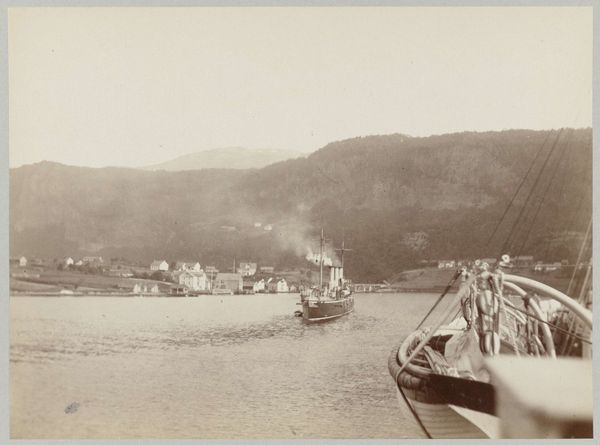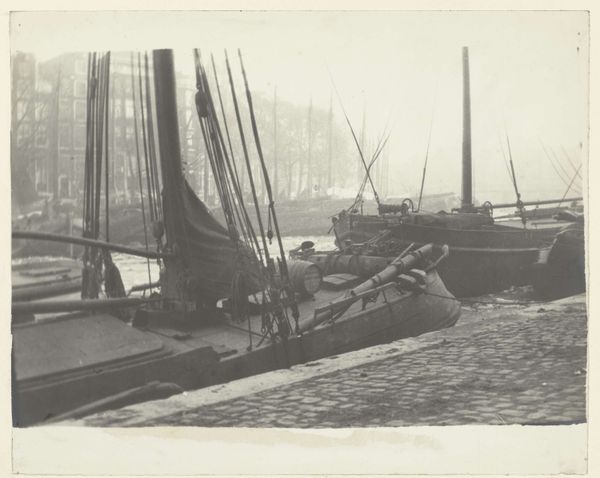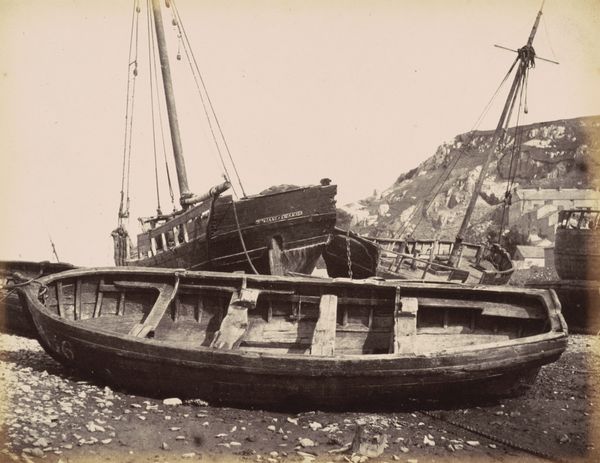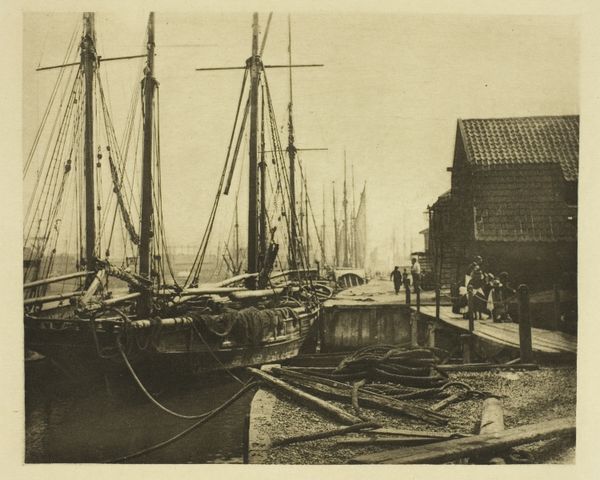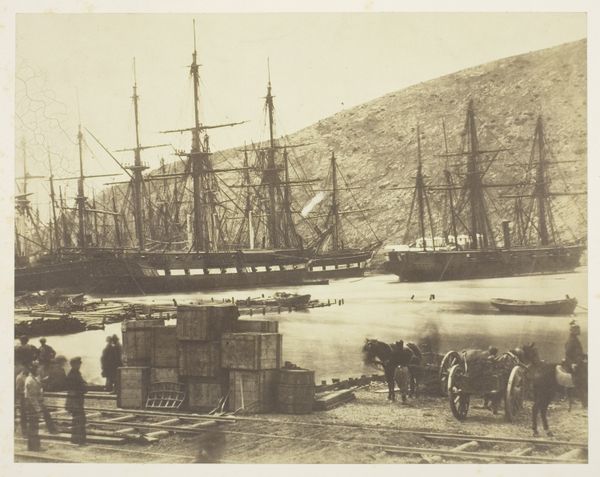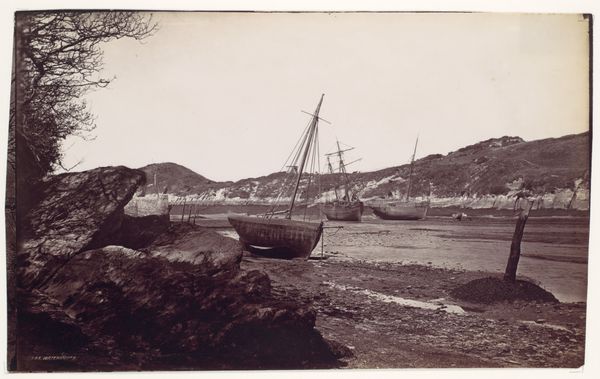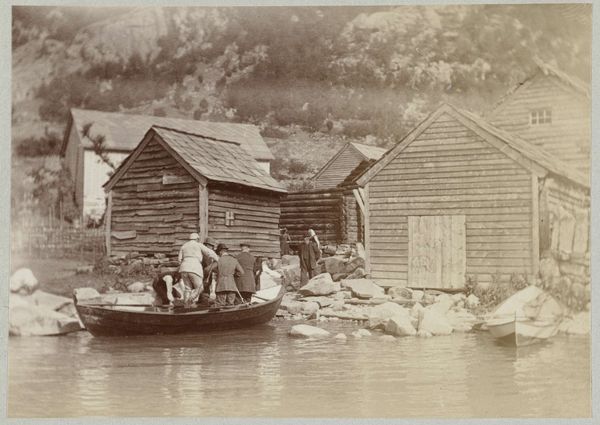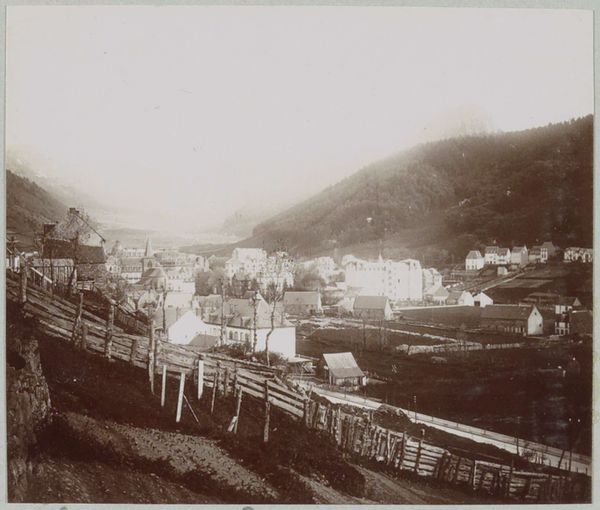
photography
#
ship
#
landscape
#
photography
#
men
#
building
Dimensions: Image: 26 x 35.1 cm (10 1/4 x 13 13/16 in.) Mount: 43.2 x 59.4 cm (17 x 23 3/8 in.)
Copyright: Public Domain
Curator: This is Roger Fenton's "Landing Place, Ordnance Wharf, Balaklava," a photograph from 1855. It resides here at the Metropolitan Museum of Art. Editor: It feels heavy, doesn't it? The low angle, the somber tones... everything feels weighed down. Curator: Well, Fenton captured this scene during the Crimean War. Photography was still quite novel then, imagine lugging all that equipment onto a battlefield to document a war. He was aiming to bring the reality of the conflict home. Editor: The war becomes almost tangible with all this tangible stuff in the foreground! Look at the chaotic layering of material: lumber, crates, and what looks like cannon parts strewn everywhere. All pointing to the machinery of war, and what materials get spent. Curator: Indeed. And it was displayed strategically as well. Fenton’s photographs were initially shown in London, garnering support for the war effort back home. Consider also, the access he likely had to gain, the socio-political power granted to him, a middle-class man. Editor: Access matters, absolutely! What materials were deemed acceptable or worth shipping, for war *and* for artistic purposes! And those men—soldiers?— clustered by the carts. They appear dwarfed, almost anonymous, amongst the material pile-up, as well as set against the mountainous scene. The composition implies a story about the toll of conflict, and that very human experience of labor behind the scenes. Curator: Fenton aimed to provide an objective view. However, photography always entails selection, choices in composition and framing that shape a narrative. Editor: Right. Choices like emphasizing material, manual handling and distribution, how resources and energy were being expended, where all of it landed. "Landing Place" captures a particular form of commerce and consumption: the war machine at its most lumbering. Curator: Precisely. And seeing the social climate and the artist's position offers much insight into how it should be viewed and understood. Editor: Well, thinking about the photograph from both of our points of view does change the way I experience the work as a whole. It’s still heavy, of course, but maybe the weight is about something more tangible than just war. Curator: I agree. A fruitful combination. Thank you.
Comments
No comments
Be the first to comment and join the conversation on the ultimate creative platform.
